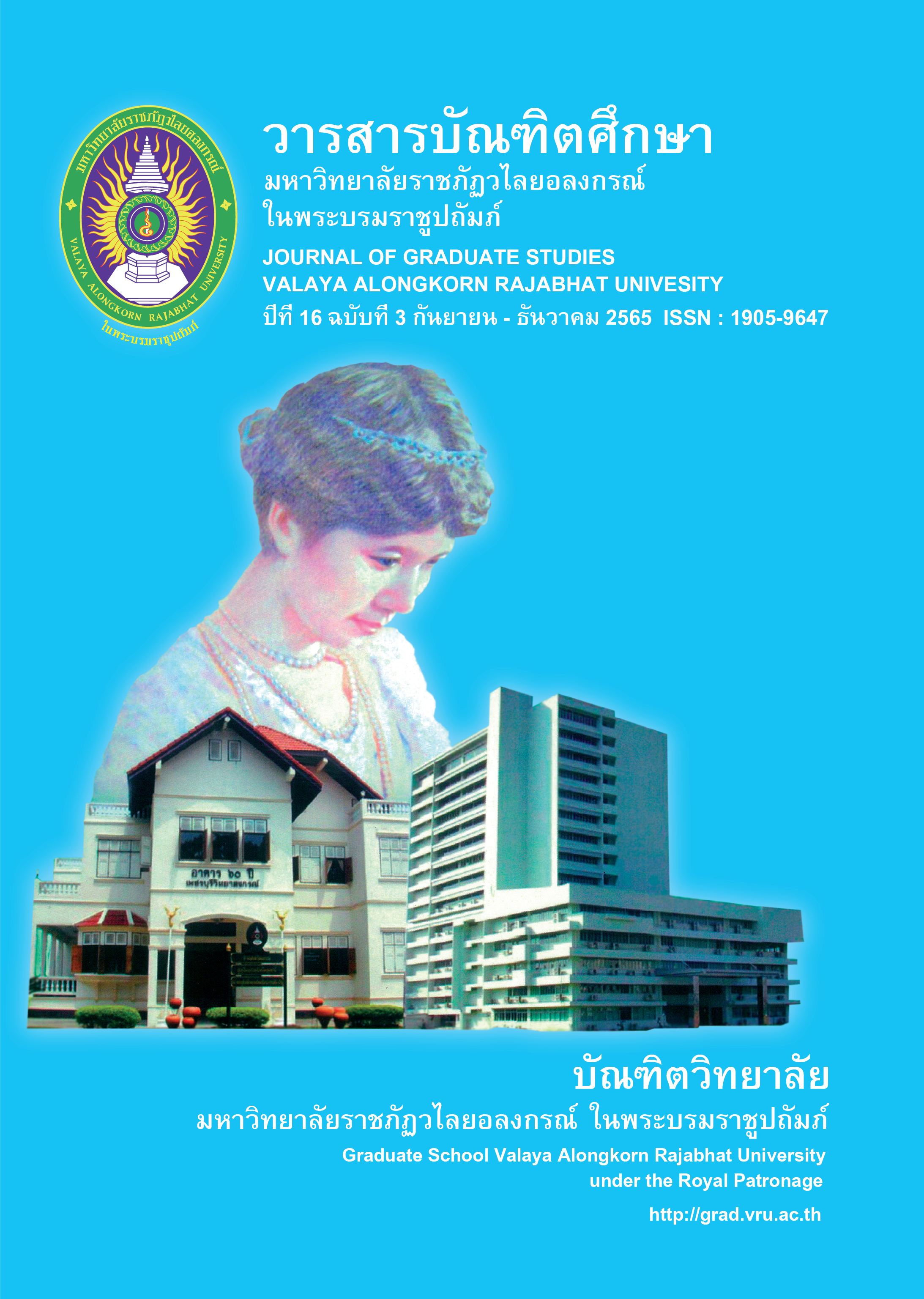EFFECTS OF USING SCIENTIFIC COMPETENCY-BASED ASSESSMENT SYSTEM UTILIZING AN ELECTRONIC PORTFOLIO
Main Article Content
Abstract
The purpose of this research was 1) to study the satisfaction of administrators and teachers towards the scientific competency-based assessment system utilizing an electronic portfolio of grade sixth students and 2) to study the students' attitude towards the scientific competency-based assessment system utilizing an electronic portfolio of grade sixth students. This research was a part of the research project on the development of scientific competency-based assessment and evaluation in the digital era. The target group included 6 administrators, 6 teachers, and 37 students from three types of schools (Bangkok, OPEC and MHESI) that the research team selected by purposeful sampling. The quality of performance was assessed using the satisfaction of the system scale, which had 5 aspects, (α = .87) for administrators and teachers. The effectiveness was assessed using the students’ attitude scale towards the system (α = .89). Both scales were Likert-type scale. After that the research team did in-depth interviews using a semi-structured interview form from the target group who voluntarily provided information.
The results showed that 1) the overall satisfaction of administrators and teachers towards the assessment system was at very good levels in all aspects ( =4.28, SD=0.53). Considering each aspect, it was found that the average score given by the administrators was statistically non-significantly higher than the average score given by the teachers at the .05 level, which was agreeable with the administrators and teachers’ interview results. 2) The students' attitude towards the assessment system was at the highest level (
=4.32, SD=0.9).
Article Details

This work is licensed under a Creative Commons Attribution-NonCommercial-NoDerivatives 4.0 International License.
บทความทุกเรื่องได้รับการตรวจความถูกต้องทางวิชาการโดยผู้ทรงคุณวุฒิ ทรรศนะและข้อคิดเห็นในบทความวารสารบัณฑิตศึกษา มหาวิทยาลัยราชภัฏวไลยอลงกรณ์ ในพระบรมราชูปถัมภ์ มิใช่เป็นทรรศนะและความคิดของผู้จัดทำจึงมิใช่ความรับผิดชอบของบัณฑิตวิทยาลัย มหาวิทยาลัยราชภัฏวไลยอลงกรณ์ ในพระบรมราชูปถัมภ์ กองบรรณาธิการไม่สงวนสิทธิ์การคัดลอก แต่ให้อ้างอิงแหล่งที่มา
References
Agarwal, P. & Prasad, J. (1997). The role of innovation characteristic and perceived voluntariness in the acceptance of information technologies. Houston: Decision Sciences.
Buzzetto-More, N. (2010). The E-portfolio paradigm: informing, educating, assessing, and managing with e-portfolios. Santa Rosa, CA: Informing Science Press.
Chankachon, K. (2008). kānphattanā phǭtfōli‘ō ‘ilektrǭnik phư̄a kānwatpramœ̄n kānrīanrū khǭng nakrīan chanmatthayomsưksā pī thī Sām Rōngrīansāthit Mahāwitthayālai Sīnakharinwirōt Pathum Wan [An electronic portfolio model development for assessing students’ learning]. Master’s thesis, Srinakharinwirot University.
Chongcharoen, S. (2005). kānwikhrǫ chœ̄ng sathiti bǣp mai chai phārāmitœ̄ [Nonparametric statistical analysis]. Bangkok: academic paper promotion project National Institute of Development Administration.
Davis, F. D. (1989). Perceived usefulness, perceived ease of use, and user acceptance of information technology. MIS Quarterly. 13(3), 319-340.
Farrell, O. (2019). Developing critical thinking through e-portfolio based learning: an exploration of the experiences of non-traditional online distance learners. Doctoral dissertation. Trinity College Dublin.
Forker, J. E. & McDonald, M. E. (1996). Methodologic trends in the healthcare professions: portfolio assessment. Nurse Educator. 21(5), 9-10.
Linn, R. L., Baker, E. L., & Dunbar, S. B. (1991). Complex, performance-based assessment; expectations and validation criteria. Educational Researcher. 20(8), 15-21.
Ministry of Education. (2008). laksūt kǣklāng kānsưksā khanphư̄nthān Phutthasakkarāt 2551 [Basic education core curriculum B.E. 2551 (A.D. 2008)]. Bangkok: Agricultural Co-operative Federation of Thailand, Ltd.
NESA, N. E. (2021). NSW government education standards. Retrieved from https://www.educationstandards.nsw.edu.au/.
Office of the Education Council. (2017). rāingān kānwikhrǫ samatthana læ kānpatibat ngān dān kānwatlæpramœ̄n khǭng khrū nai radap kānsưksā khanphư̄nthān [Performance analysis and basic education level teacher’s assessment operation report]. Bangkok: Prikwan graphic company Ltd.
Office of the National Economic and Social Development Council. (2020). yutthasāt chāt raya yīsip pī (2018 – 2037) [National strategy (2018 – 2037)]. Retrieved from www.nesdb.go.th.
Pasiphol, S. & Sotthayakom, P. (2016). kānphatthanā rūpbǣp fǣm sasom phonngān ‘ilektrǭnik thī sathǭn khǭmūnyǭnklap nai kānpramœ̄n phatthanā kānrīanrū khǭng nakrīan radap prathomsưksā [Development of electronic portfolio model to assess learning development of elementary school student]. Kasetsart Journal of Social Science. 37(3), 291-305.
Sawatnatee, A. & Piriyasurawong, P. (2015). rūpbǣp fǣm sasom phonngān ‘ilektrǭnik samrap kānnithēt kānfưkprasopkānwichāchīp dānkhǭmphiutœ̄ bǣp phasomphasān phān ‘uppakǭn samātfōn nai mahāwitthayālai rātchaphat [A model of electronic portfolio for blended supervision in professional experiences on computer by smartphone device in Rajabhat University]. VRU Research and Development Journal Science and Technology. 10(2), 13-22.
Thongjan, P. (2018). kānphatthanā e - Portfolio samrap nakrīan sadǣng phon phān Smart Phone dūai kānprayukchai QR Code [The development of electronic student portfolio displayed on smartphone by applying QR code]. The Journal of Social Communication Innovation. 6(1), 188-197.


